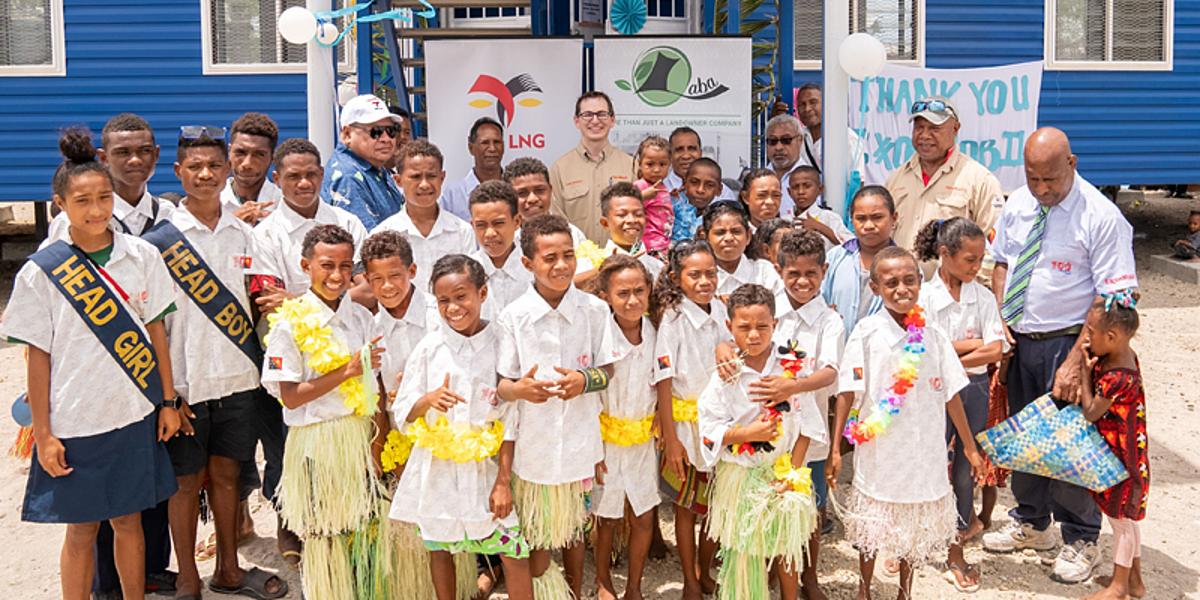Volcanic eruption in Tavurvur volcano, Rabaul, New Britain Island, Papua New Guinea [Photo credit: Eric Lafforgue - www.ericlafforgue.com]
"PNG through Mineral Resource Authority (MRA) has now embarked on undertaking geothermal exploration in the country with assistance from the World Bank and the Government of Iceland through training of its staff, as there is a need to diversity in its energy source and increase the energy needs of the country." (taken from "Geothermal Mapping in PNG" by Barney Orere, Post-Courier.com.ph)
From a commentary article by Barney Orere, a list of opportunities and challenges were enumerated from Mining and Exploration Bulletin 2014 by the Mineral Resources Authority. The report details out the geothermal prospects as a potential source of sustainable energy in PNG.
Investment opportunities were brought to light as a result of the 2018 APEC Summit where three countries have teamed up with the PNG Government and PNG Power Limited to lighting up 70% of PNG by 2030. One question that surfaced is about Deidel on Fergusson Bay Province. Being a geothermal prospect, will it offer any potential investments to have a positive impact on the country?
For this, MRA conducted studies and investigations in the islands of New Guinea. Here are some keypoints:
~ The volcanic island of New Britain is the most prospective region for the development of geothermal energy resources in Papua New Guinea. [1]
~ The northern coastline from the Willaumez Peninsula in Talasea and West New BritaIn Province of the Gazelle Peninsula in Rabaul has scattered geothermal prospects. New Britain Island has several volcanoes which are dormant. The island has two active volcanoes, namely: Pago in Cape Hoskins are in West New Britain Province (WNBP) and the Rabaul (Tavurvur) volcano in the Gazelle Peninsula in East New Britain Province (ENBP).
On the other aspects of the study, the main economic activity in West New Britain Province is based largely on oil palm industry. This is apart from other business activities in its capital, Kimble, plus in smaller towns in Hoskins and Bialla. How many people are dependent on this industry? Based on the population count in NRI Report 2010, Talasea District (in West New Britain Province) is around 128,800. For their livelihood, these people are directly and indirectly dependent on oil palm industry.
Where do they get their electricity? Their province has four 400-6-KW diesel generators and two mini-hydro power plants supplied by PNG Power Limited. These are the main sources of electricity for this province.
Additionally, their local oil palm plantations have their own energy sources in order to address the issue of insufficient electricity supply. This is their backup energy source as their solution for the frequent power outages.
More on the geothermal study in Papua New Guinea, geoscientific information reports that WNBP has a few scattered geothermal prospects. "…previous reconnaissance geochemical survey undertaken in Talasea provided temperatures which ranges from 44°C to 101°C. (Berhane and Mosusu, 1997)" [1]
MRA started conducting geothermal exploration in Papua New Guinea with the support of the World Bank and the Government of Iceland.
"The reconnaissance field survey of the various geothermal sites in the Talasea District of WNBP was undertaken in November 2012 as part of the MRA's ongoing geothermal exploration work." [1]
Papua New Guinea belongs on the "Ring of Fire" location, thus strong and frequent seismic activities are notable here. Seismicity is rampant at the northeastern margins of the Solomon Sea where the Solomon plate is sub-ducted northward beneath the South Bismarck and the Pacific Plates along the New Britain Trench. The seismicity in this region is known as one of the most intense in the world. [1]
More on the geothermal prospects, WNBP has at least seven, five of which were explored during the field work. They are Pangalu-Talasea, Bola and Garbuna (Garu area west of Garbuna) in the Williaumez (Talasea) Peninsula, Silanga and Kasiloli prospects in the Hoskins area.
Two prospective locations that were not visited are Galloseulo and Bamus. Pangalu and Talasea are considered as separate prospects. In the report as well, Bola is part of Talasea.
In the survey, 36 geothermal surface features were identified. These features are geysers, hot springs mud pools, fumaroles and streaming grounds. These geothermal manifestations were studied to determine the temperature, pH, salinity, conductivity and feature dimensions.
These geothermal surface features are located within the oil palm plantations, near settlements and near Kimble and Hoskins towns.
In the study, water and gas samples were also gathered for analysis. Samples that were taken include 13 spring samples, seven gas samples and even a meteoric water sample from Laka Dakautaua at the Williaumez Peninsula. The samples were sent for lab analysis at the New Zealand Geothermal Analytical Laboratory (NZGAL), GNS Science, Wairakei. Ten of the samples were taken from Williaumez Peninsula, three from Silanga and one from Kasiloli.
WNBP is situated within an active tectonic area, thus geothermal activity is common here.
The data below shows why these four locations are good prospects for geothermal spots:
Pangalu (Rabili) - 270°C to 295°C
Talasea Station - 270°C to 310°C
Silanga (Bakama and Sakalu) - 210°C to 290°C
Kasiloli (Magouru) - 275°C to 300°C
Since geothermal prospects Pangalu and Talasea Station are situated within the shoreline, the water samples may be contaminated with seawater. For this, isotopic analysis is needed to test the water samples accurately. This technique in testing and analysis can determine possible seawater contamination of the sample. The report notes that there is a lack of gas and isotopic data analysis during the study. Thus, it is recommended that isotopic analysis should be part of the study. Another important recommendation is the use of proper equipment in collecting gas samples, in order to come up with accurate geochemistry data.
Overall, further investigations are needed in surface geology mapping, geophysics survey and geochemical surveys of hot springs that were not yet sampled.
-----
Reference:
Orere, Barney (24 Feb. 2021). "Geothermal Mapping in PNG". Papua New Guinea Post-Courier. Retrieved from - https://postcourier.com.pg/geothermal-mapping-in-png-2/
Photo credit:
Volcano in PNG – Tavurvur volcano, Rabaul, New Britain Island - https://www.flickr.com/photos/mytripsmypics/8398027130
by Eric Lafforgue Photography - https://www.ericlafforgue.com/articles/About








